Key Components of an Onboarding Plan
Last Updated on April 14, 2022 / Training & Development

HR Question:
We’re a small company, but growing quickly. We don’t have a formal process for onboarding yet. What are the key components of a good onboarding plan?
HR Answer:
In this tight labor market, anyone who is responsible for hiring new talent understands how difficult it is to find the right person with the right skill set to meet your needs. Many companies have had to review and dramatically modify their recruiting approach to create a candidate experience that attracts the best talent. Once you find the right candidate, you certainly want to do all that you can to keep them! Having a well-designed and well-executed onboarding plan will allow you to build upon a great candidate experience, and it is a key step to retaining your new employees.
A great way to determine the important components of an onboarding plan is to ask the target audience – the new employees. According to BambooHR’s employee onboarding survey, here are the top four things that employees value the most in their first week:
- On-the-job training (76 percent)
- Review of the company’s policies, such as dress code, time-off policy, etc. (73 percent)
- Review of administrative procedures, such as a touring the facility and setting up their work station (59 percent)
- Assignment of an employee “buddy” or mentor (56 percent)
Onboarding – What To Do Before The First Day
Your onboarding efforts should begin from the moment that an employee accepts an offer and reach far beyond completing the required employment paperwork. Here are a few things you should address before your new employee’s first day:
Good communication is key!
Encourage your new hire to ask questions- even before they start. By addressing employee questions before their first day, you can help to ease their concerns and make for a smooth transition into your company. Also, be sure to answer their questions promptly.
Introduce the employee to staff BEFORE they start.
Ask the new employee to provide some information about themselves along with a photo that can be shared with the current staff before their arrival. This makes it easy for your team members to make connections with your new employee right from the beginning.
Prepare their workstation.
Although the work area may look and feel different depending on the nature of the employee’s role, it should be clean and have all of the equipment they need (i.e., desk, chair, phone, computer, printer, etc.) in a state that’s ready to use. Remember that small personal touches (i.e., welcome sign at their work station, welcome card from their manager/team, desk plant or small gift, etc.) can go a long way to helping your new employee to feel welcomed and valued.
Have technology and related resources ready.
Ensure that their computer is ready with all the necessary software and email already set up as well as their phone and any other equipment they might need so they can hit the ground running on their first day.
Assign a Mentor/Buddy.
Choose someone who will be a positive and helpful resource who knows the company and the nature of the new hire’s job well so they can effectively answer questions. If you don’t already plan to have a group lunch on the employee’s first day, an alternative could be to have their mentor take them to lunch. You should clarify the expectations of the mentor ahead of time and determine a minimum duration for the mentor relationship.
Create an on-site employee onboarding plan.
It’s helpful to develop a checklist to ensure that you include all of the necessary paperwork, company background information (history, culture, etc.), employee handbook, and training that the new hire should receive. This checklist can also help you to determine who needs to be involved in the onboarding process and related training allowing you to ensure these individuals are prepared and ready for when they are expected to meet with your new employee(s).
Develop a list of actions that your new employee(s) should take within the first week and at 30-60-90 days so they can understand and meet your expectations. Be sure that you (or their supervisor) schedule check-ins on these items so you can help your new employee to stay on track and make adjustments as necessary.
Train your team to be good hosts.
Beyond providing the “nuts and bolts” in your onboarding, remember that your new employee is probably nervous and looking to feel accepted and connected to your company. By following the spirit of being a good host (i.e., encouraging staff to greet the new employee, providing opportunities to make connections with their team members in their early days, allowing ample time for their questions and feedback, etc.), it can make the beginning days/weeks much more comfortable and enjoyable leaving a positive impression on your new employee.
By taking the time to develop a solid onboarding process, you provide a great foundation on which your new employees can build their career with your company. By making their first days/weeks/months a positive experience, you will also dramatically increase their productivity, engagement, satisfaction, and retention with your company.
Providing the right onboarding support and training for new employees to have a smooth transition into your organization is a key factor in employee retention. To remain competitive, companies need to continue to provide meaningful training and employee development. Strategic HR provides a variety of resources to offer you the best in training programs to keep you on the leading edge. Visit our Training and Development page to learn how we can assist you with your training and development, or contact us.




